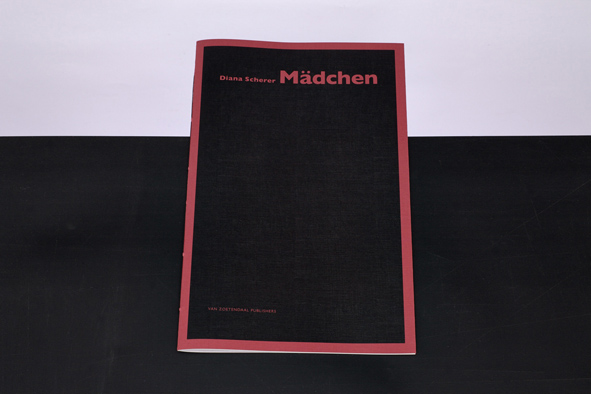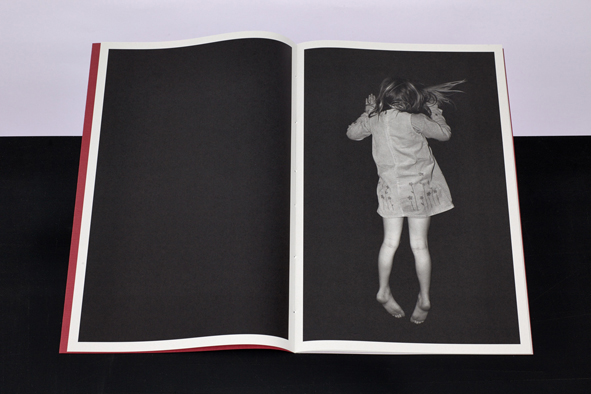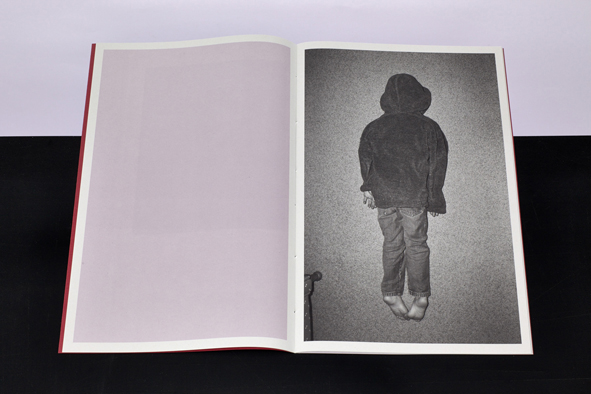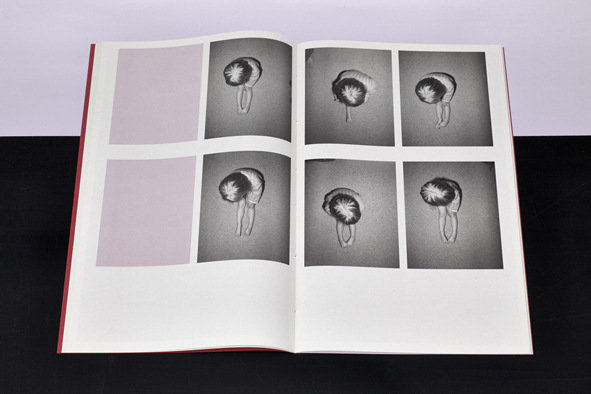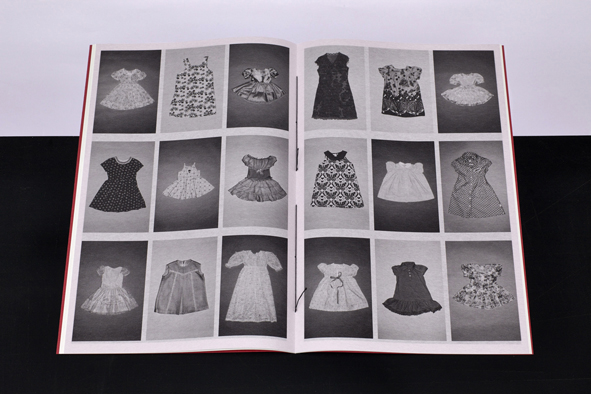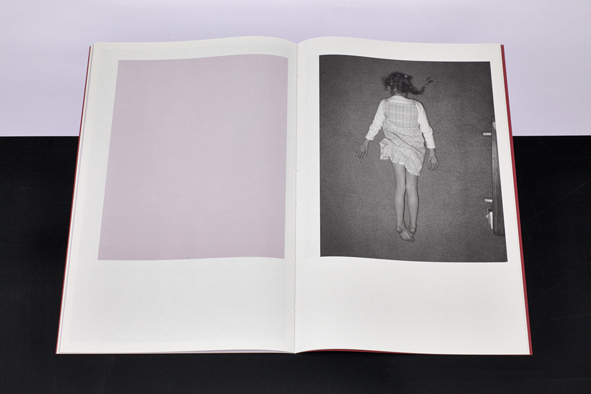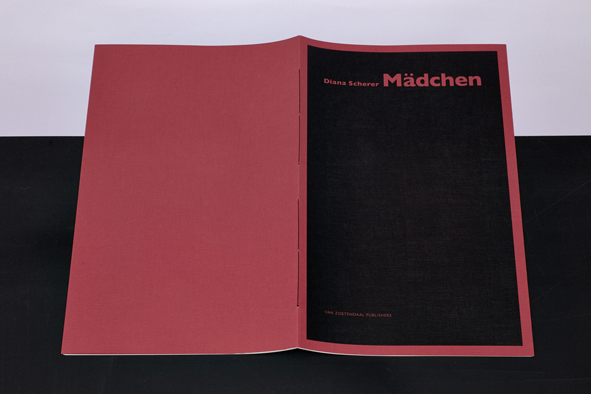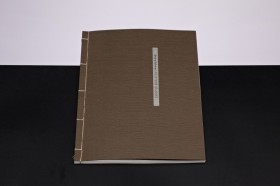Diana Scherer – Mädchen / Diana Scherer
Butterfly Catcher
The book opens with a black page with a white border, on the next page the girl is lying on a black background with her face to the floor. She looks like she has just died in this position, but later turns out to be very much alive and able to sit up. Further along, a pair of girls’ tights, cast in plaster, suggest growth and physical presence. But the child is gone: the fabric is a rigid white, no longer containing hips or grazed knees. It is an abandoned cocoon, idealised and hung up by those who have been left behind.
Suffocating protectiveness and fatal deformation are familiar themes in Diana Scherer’s work. In The Peace Weary (2013) she drew inspiration from the photography book Murder in Rotterdam: modelling small figures based on the bodies in the police photos and photographing them close up in her studio. And for Nurture Studies (2012) she spent two years cultivating wildflowers, with the roots taking the shape of the vases in which they grew. She photographed the plants in full flower, but only after breaking and removing the vases. The colourful, dynamic results are an archive of death throes: without the protection of the vase that formed and housed the plant, the organism can only die.
In the middle of the book where the large bound sheet presses against itself, page to page, the thin paper shows a sets of eighteen dresses, captured and ready to be fitted, laid out on the floor like butterflies in a glass case.
Lepidopterists call the colourful phase in the life cycle of the butterfly the imago. The pattern on the imago’s wings is invariable and reveals genus, subgenus and species. To preserve and mount a butterfly imago, one must pierce the body with a pin. The originally German practice of classifying butterflies according to the pattern on the wings fell into decline in the early twentieth century when English-speaking lepidopterists adopted identification based on the structure of the genitalia. As these are shaped to make mating with a butterfly of another species impossible, they are a more precise indicator. But to study the genitalia you need to dissect the butterfly, and then you’re no longer able to display the magnificent wings.
The photos in Mädchen give an impression of having been taken in a domestic setting: table legs on the carpet, the lino reflecting a flash, or perhaps an ordinary light bulb. The girls lie flat on their stomachs or sit motionless on the floor, the constant perspective is that of an adult standing over them and looking straight down.
Despite this, the children’s hands and arms are powerful and tensed, with one girl making cautious balletic movements. The disarming black-and-white portraits in Scherer’s Mädchen depict girls who want to romp, dance and spread their wings, but are still pinned down in the collection of a lepidopterist who is frantically searching for the most pristine specimen of a fantasised imago.
Joke de Wolf
- Year 2014
- Size 38x24cm
- Colour Duo tones + one extra colour (lavendfer)
- Binding paparback with thread binding
- Pages 32
- Concept Diana Scherer
- Design Willem van Zoetendaal
- ISBN 978-90-72532-23-7


